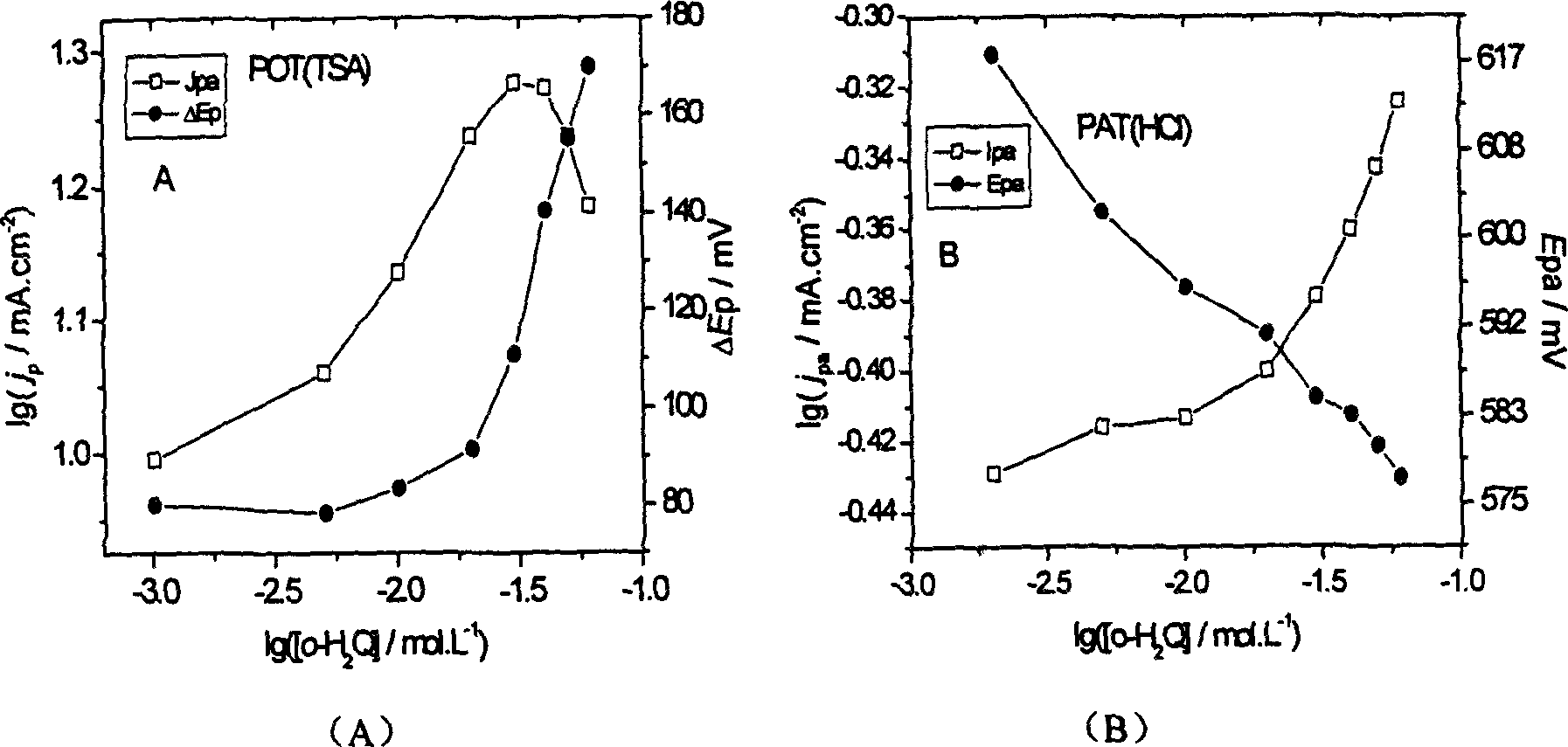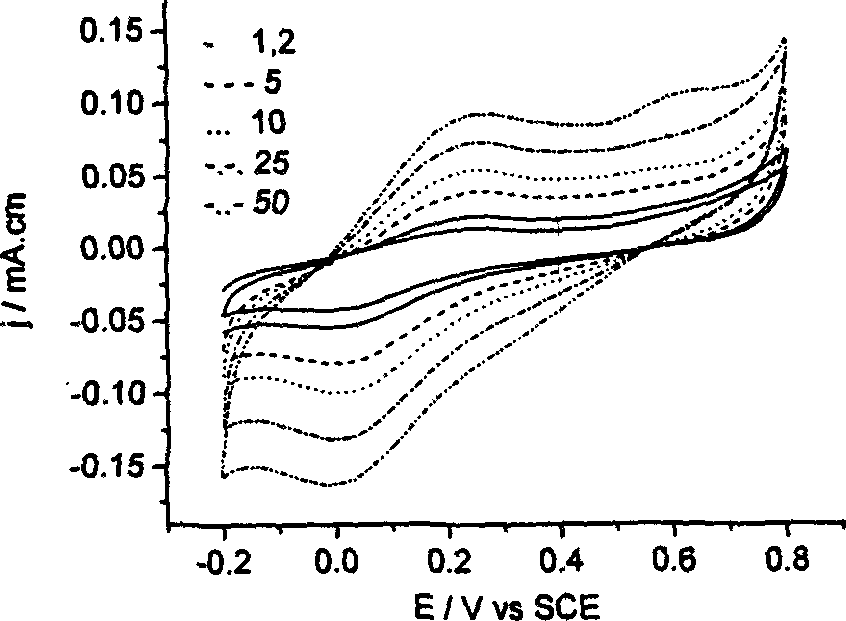Catechol detection sensor, preparing process and application thereof
A technology for detecting sensors and catechol, which is applied in the field of electronically conductive polymers—poly-o-aminothiophenol polymer film-modified electrodes and its preparation, which can solve electrode surface passivation and detection difficulties in electrochemical analysis methods, etc. problem, to achieve the effect of reducing the degree of oxidation, improving electrochemical activity, and increasing molecular weight
- Summary
- Abstract
- Description
- Claims
- Application Information
AI Technical Summary
Problems solved by technology
Method used
Image
Examples
Embodiment 1
[0028] Under nitrogen protection, 80mL 0.12mol / L HCl and 2.736g SDS (0.12mol / L) were successively added to a 250mL three-necked bottle, heated to 70°C, and after the dissolution was complete, 1.252g o-aminothiophenol ( 0.1mol / L), stir evenly, and dissolve 0.014mol APS in 30mL 0.12mol / L HCl solution, slowly drop into the reaction system, about 1.0h to finish. After reacting for 10 hours, the reaction solution was left standing in a refrigerator at 6° C. for 24 hours, and 70 mL of ethanol was added to break the emulsification and precipitate the polymer. Suction filtration, wash the solid with deionized water until the filtrate has no foam, and then wash with ethanol several times until the filtrate is colorless, and vacuum-dry at room temperature to obtain brown powdery polymer PAT(HCl).
[0029] Prepare PAT (HCl) into a 3.0 mg / mL DMF solution, and use a micro-vortex mixer to aid in dissolution; take a certain amount of polymer solution and coat it on the surface of a platinum ...
Embodiment 2
[0032] Prepare PAT (HCl) into a 5.0 mg / mL DMF solution, and use a micro-vortex mixer to aid in dissolution; take a certain amount of polymer solution and coat it on the surface of the gold plate electrode, and dry it in an infrared rapid drying box to obtain the polymer Thin film modified electrode, the adhesion amount of polymer on the electrode surface is 0.3mg·cm -2 .
Embodiment 3
[0034] Prepare PAT (HCl) into 8.0mg / mL DMF solution, and use a micro-vortex mixer to aid dissolution; take a certain amount of polymer solution and coat it on the surface of the gold plate electrode, and dry it in an infrared rapid drying box to obtain the polymer Thin film modified electrode, the adhesion amount of polymer on the electrode surface is 0.8mg·cm -2 .
PUM
| Property | Measurement | Unit |
|---|---|---|
| Adhesion | aaaaa | aaaaa |
| Adhesion | aaaaa | aaaaa |
Abstract
Description
Claims
Application Information
 Login to View More
Login to View More - R&D
- Intellectual Property
- Life Sciences
- Materials
- Tech Scout
- Unparalleled Data Quality
- Higher Quality Content
- 60% Fewer Hallucinations
Browse by: Latest US Patents, China's latest patents, Technical Efficacy Thesaurus, Application Domain, Technology Topic, Popular Technical Reports.
© 2025 PatSnap. All rights reserved.Legal|Privacy policy|Modern Slavery Act Transparency Statement|Sitemap|About US| Contact US: help@patsnap.com


